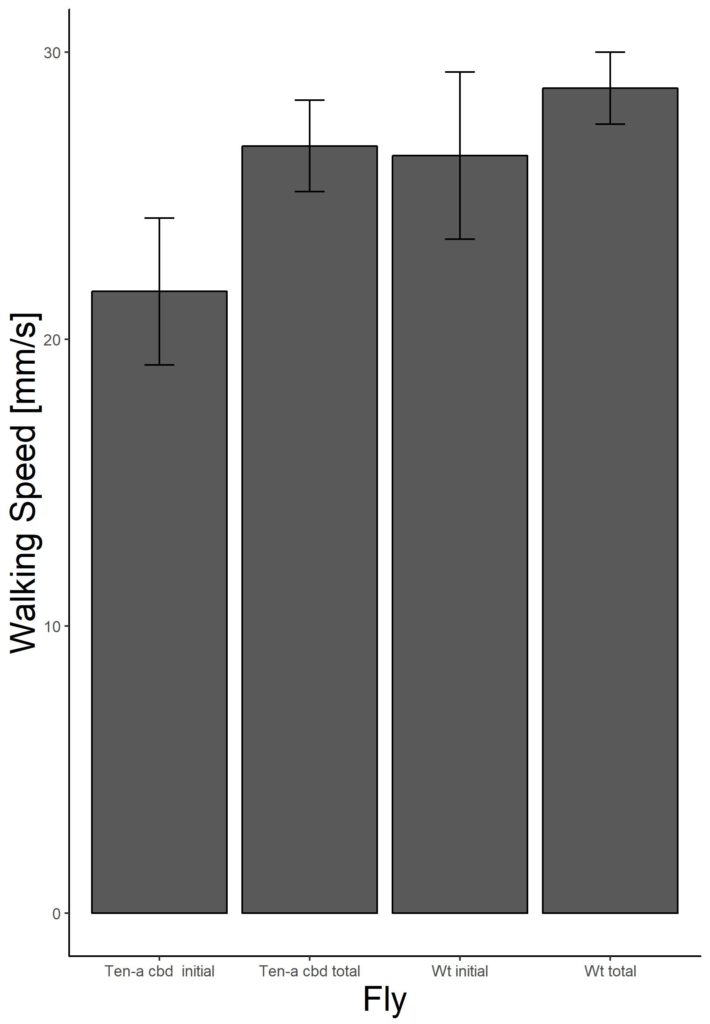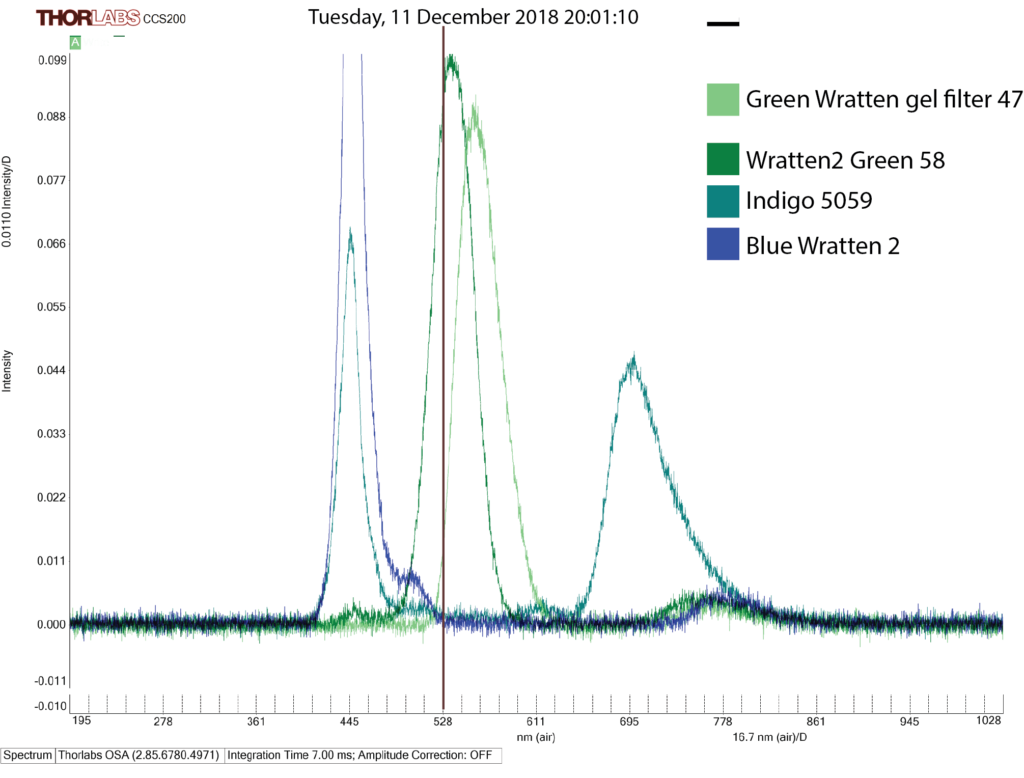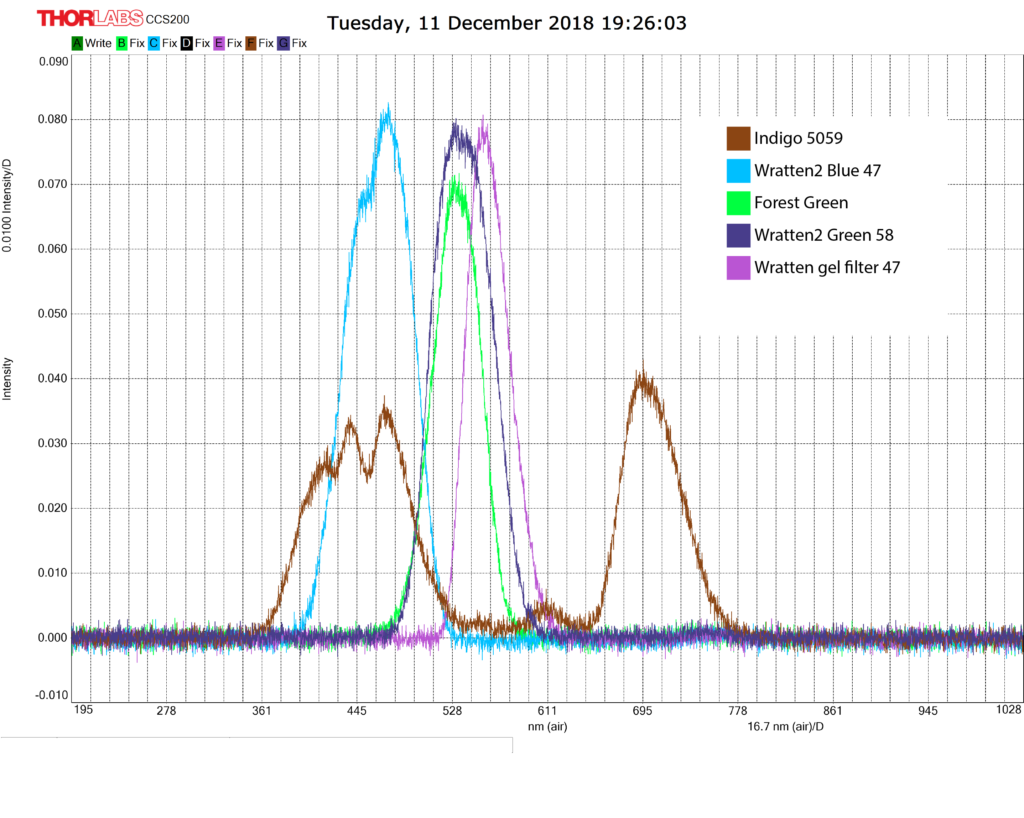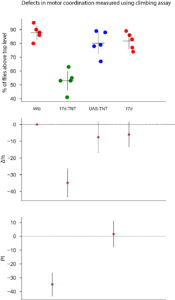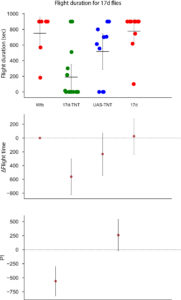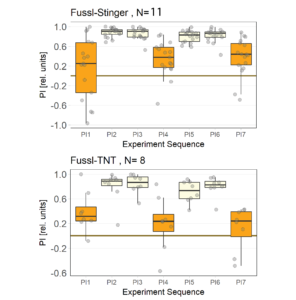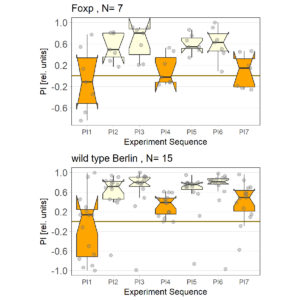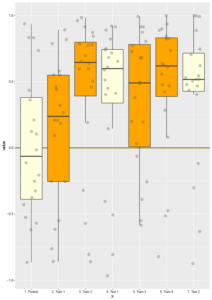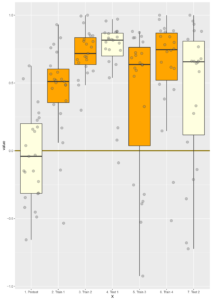Isolated operant component in the flight simulator
on Monday, January 21st, 2019 2:43 | by Anders Eriksson

Each period is set to 120 seconds, meaning that the flies are getting a total of 8 minutes of training. The flies are performing two initial pre-tests, one test after 4 minutes of training and two final test periods. For the entire duration of the experiments flies are given a color indication if they are being punished or not as a result of left or right turning, this is a composite learning control. For the final test periods the colors have been removed, meaning that we are isolating the operant component. This is different from the previous tests that has been done where flies were not challenged with colors but just relied on their own behavior to determine which side is being punished. A removal of the helping colors resulted in a lack of preference for left- or right-turning maneuvers.
Category: flight, Memory, Operant learning, operant self-learning, Uncategorized | No Comments
Flight performance Ten-a cbd
on Monday, January 14th, 2019 2:54 | by Anders Eriksson
Measuring transmission spectra of color filters
on Monday, December 17th, 2018 1:32 | by Anders Eriksson
Category: flight, operant self-learning, Uncategorized | No Comments
17d flight simulator
on Monday, October 1st, 2018 2:58 | by Anders Eriksson

Category: crosses, flight, genetics, Memory, Operant learning, operant self-learning | No Comments
17d
on Monday, September 10th, 2018 1:03 | by Anders Eriksson
The experiments in the flight simulator. Self-learning performance indices in a two-minute test with the heat switched off after 4 and 8 minutes of training, indicated impairment of 17d-TNT flies.

The flies also showed clear impairments in their flight performance. To quantify this I assessed both possible alterations in their motor coordination (using climbing assay) as well as flight performance. The climbing assay relies on walking rather than flying. Both experiments show reduced ability of motor coordination and flight performance.
To confirm the specificity of the 17d-Gal4 fly I used the trans-tango flies.
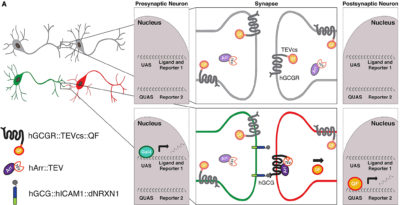
Neuron, 96 (2017) 783-799. doi:10.1016/j.neuron.2017.10.011
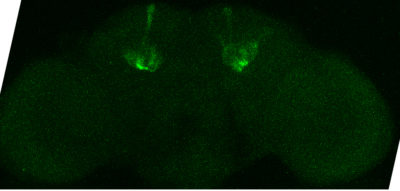
The trans-tango is notorious for having a low expression in adult flies, which was also observed by me. The image is taking without any GFP-antibody.
Category: Anatomy, crosses, flight, genetics, Memory, operant self-learning | No Comments
Fussl shows numerical difference in operant self learning
on Tuesday, August 7th, 2018 2:49 | by Anders Eriksson
The experiment was done as a pilot experiment before doing a larger scale.
The data is a bit inconsistent but shows a positive and reassuring numerical difference. The control is a bit lower than expected, compared to WTB flies (showing usually a PI 0f 0.6). The flies have a slightly different background than wtb flies and have pale orange eyes (still no apparent impairments in vision). Further experiments will be conducted before proceeding with a larger sample size of the flies.
Category: crosses, flight, genetics, Lab, Memory, operant self-learning | No Comments
Assessing the difficulties in self-learning for FoxP flies
on Monday, July 30th, 2018 1:52 | by Anders Eriksson

Category: flight, Foxp, Memory, operant self-learning | No Comments
Running the flight simulator analysis script
on Monday, July 2nd, 2018 1:55 | by Anders Eriksson
Category: flight, Lab, Memory, R code | No Comments
Wildtype flies and flight simulator Part 2
on Monday, June 11th, 2018 1:29 | by Anders Eriksson
Category: flight, Memory, R code, Uncategorized | No Comments
Wildtype flies and flight simulator
on Monday, June 4th, 2018 9:18 | by Anders Eriksson
Category: flight, Memory, R code | No Comments

